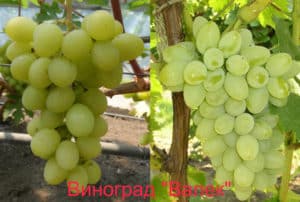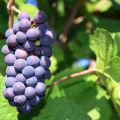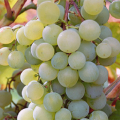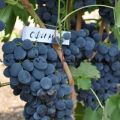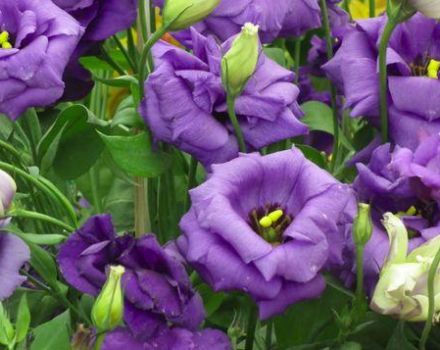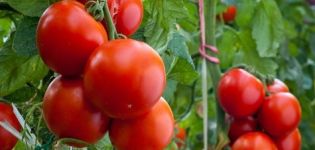Description and characteristics of Pinot Grigio grapes, pros and cons, cultivation
Grapes have been cultivated by people for centuries. Delicious juicy berries, aromatic wine, but in order to get a good harvest, you need to choose the right variety and carefully care for the vine. The history of the Pinot Grigio grape variety dating back several centuries makes it possible to talk about it as one of the best for producing wines with excellent taste characteristics.
Breeding history of the variety
The Pinot Grigio variety belongs to technical grape varieties and is intended for wine production. The first mentions of this variety date back to the 13th century. Then this variety was grown exclusively in France. The wine made from the berries of this grape was especially liked by Emperor Charles IV.
Gray Pinot is originally from Burgundy, but later this variety began to be cultivated in Italy. Italian winemakers managed to get a fragrant light wine with honey notes from the berries of this variety. Breeding work carried out by the Soviet scientists P.P. Blagonravov, E. B. Ivanova and P. V. Gorobets made it possible to increase the yield of the variety and made it possible to grow it on the territory of the North Caucasus and the former Soviet republics.
In 1970, he passed state tests, and since then has been successfully cultivated in Russia.
The best wines from the berries of this variety are produced by Italy and France, however, its own wine Pinot Grigio is produced by Germany, the USA, Australia, Chile, Russia and many other countries. Pinot Gris is a cloned main variety cultivated in Switzerland.
Varieties
The Pinot Grigio grape has several varieties. White and rosé wines are made from it.
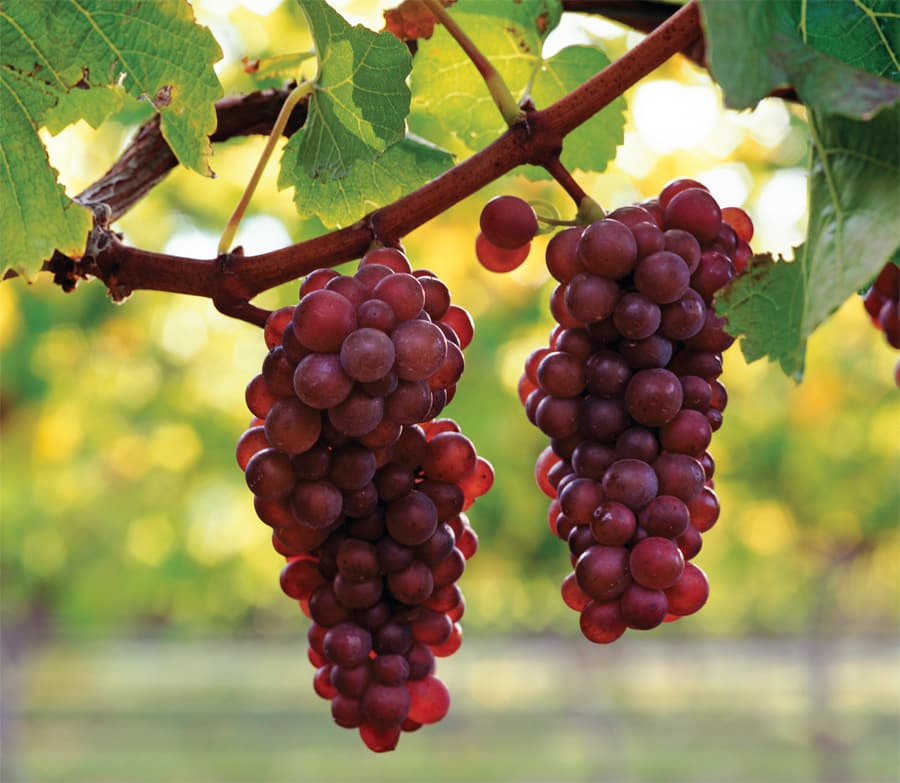
American grapes
Pinot Grigio has been cultivated in the American state of Oregon since 1966. Through the efforts of the American farmer David Lett, the grapes took root in the Willamet Valley. Consistently high yields have made the wine made from this grape variety the most popular in the state. The taste characteristics of the resulting wines attract with a wide palette. Some people like spicy shades, others prefer light refreshing notes.
It is fair to say that connoisseurs still prefer Italian or French wine.
Italian
Italy does not give up its leading position in the production of Pinot Grigio wines. Vineyards cover an area from north to south of the country. Since the variety prefers a temperate climate, the best wines from it are obtained in the northern regions: Friuli, Venetto, Alto Adige. Nordic wines have a spice, almond flavor and hints of peach. Italians love young wines made from these grapes.

External parameters and characteristics
Belongs to the group of Western European late grape varieties. With all the technical characteristics of white grapes, Pinot Grigio berries often have a reddish brown hue. This is emphasized in all descriptions of the variety. Some clones of the variety are distinguished by clusters of golden green or golden color. That is why wines from it can be white and rosé and differ in taste.
Pinot, translated from French - a bump. The bunches really resemble a cone: small berries are densely located, in the center the bunches sometimes deform from compression. They can be round or slightly oval, the thin skin is highly durable. The bunch has a short stem, weight - from 80 to 150 grams. The average size of the leaves is 15x14 centimeters, they are 3-5 lobed, with a deep dissection.
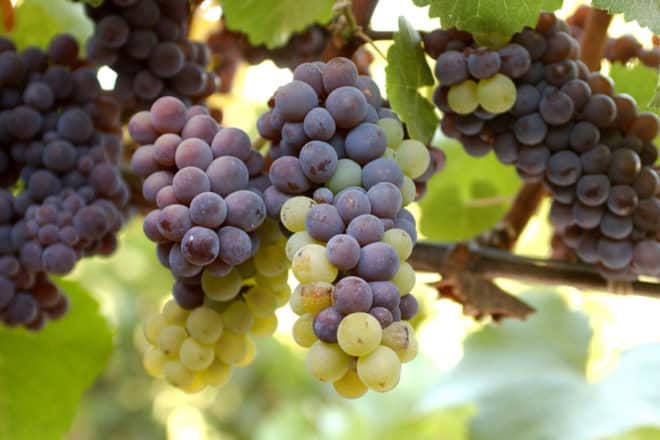
Juicy and tender berries have 1-3 seeds. The juice of this grape variety is colorless and rich. The sugar content of the berries is about 20%. The variety is not very productive, while the bushes are large and vigorous, they take root well in a cool (for grapes) climate and grow.
Pinot Gris does not tolerate frost. The variety needs 130-150 days to ripen, the harvest is harvested in 1-2 ten days of September. Not too resistant to powdery mildew and mildew, prolonged rainy conditions can provoke the development of gray rot.
It is used to prepare table and sparkling wines of high quality, used in the production of champagne.
Bush and shoots
The variety is distinguished by a significant growth of shoots and a developed root system. Annual shoots are light brown, with shortened internodes and darker nodes. With a strong growth, the bush needs pruning. The crown of young shoots is strongly pubescent. In the first three years after planting, the bush is especially demanding to comply with agrotechnical growing conditions.
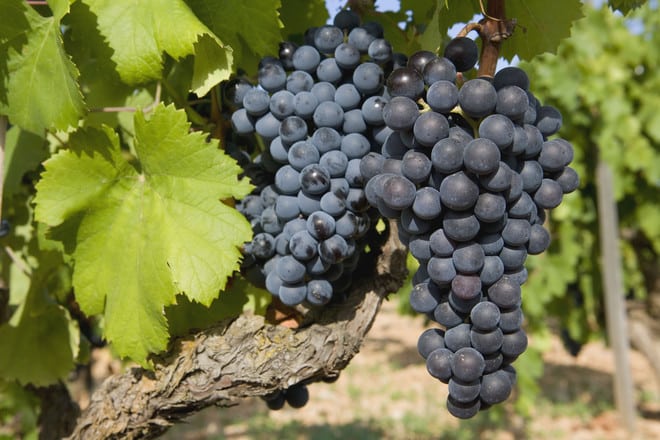
Yield
The variety has an average yield. There are about 52% of fruitful shoots on the bush. When grown industrially, it gives about 9 tons per hectare. For a good harvest, you need: suitable soil, no drafts and timely treatment against pests and diseases. The low yield is more than offset by the excellent taste of the resulting wine.
In what areas is it recommended to plant
The Pinot Grigio variety thrives in the regions of the North Caucasus, in the Crimea and Krasnodar Territory. In other places, it is often affected by spring frosts and requires high-quality shelter for the winter.
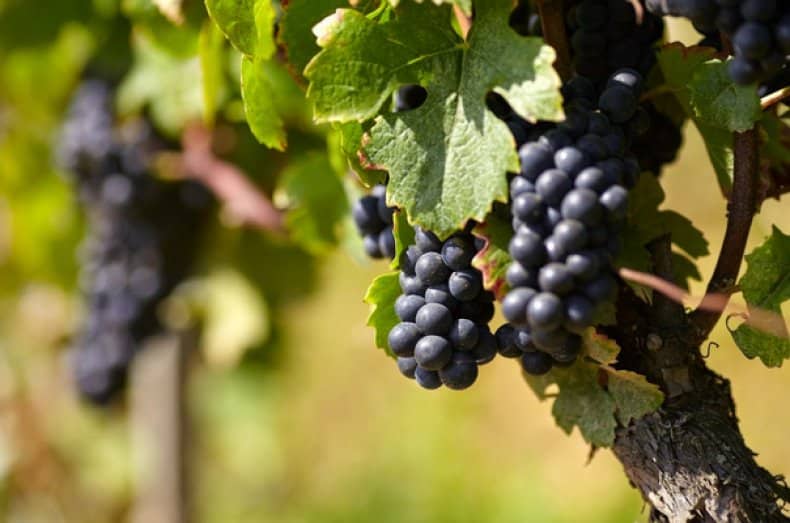
Planting and leaving
The variety takes root well if the weather conditions match.
Selection of seedlings
It is better to purchase seedlings just before planting. They must have healthy, strong, developed roots, which resemble raw potatoes at the break. Look for specimens with a smooth, healthy, undamaged trunk. Under the bark, the seedling should be a deep green color. When buying, you should put pressure on the eyes, if they fall off, you should refuse to purchase.
It is better to purchase seedlings from special nurseries or from trusted suppliers. Growing enthusiasts often exchange seedlings with each other. Numerous forums on the Internet have advice on the specifics of agricultural technology.
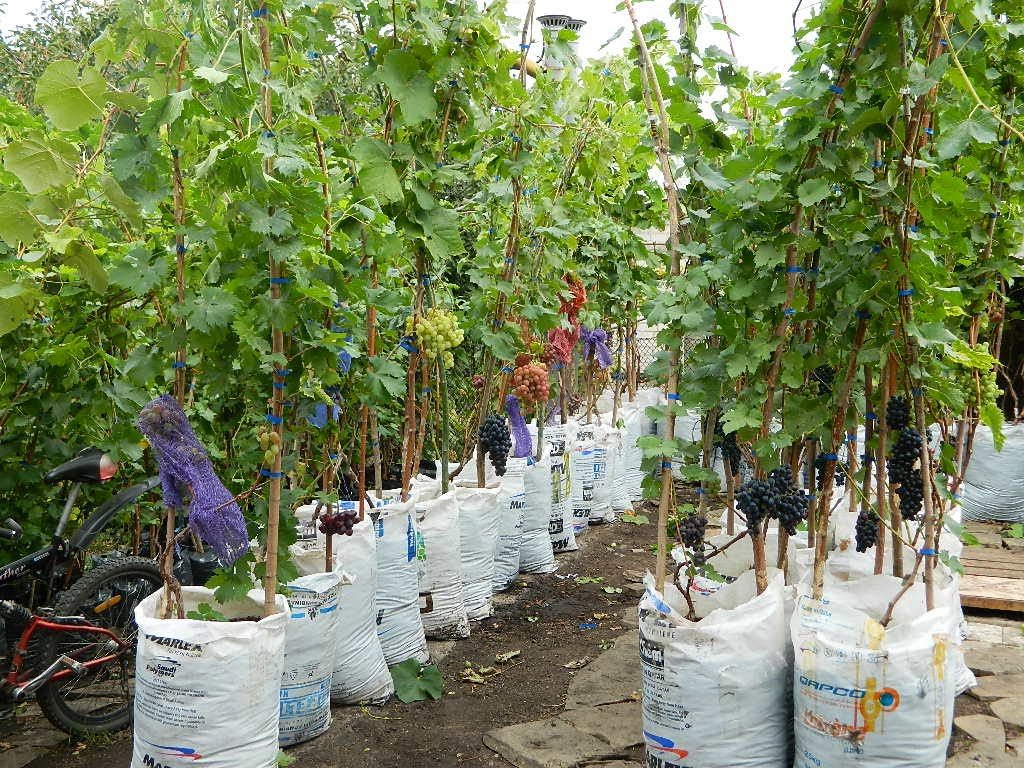
Requirements for soil and planting space
The grapes prefer fertile soil. The quantity and quality of the crop directly depends on this.It does not tolerate acidic and saline soils. Grows well in sunny, elevated or well-drained areas with neutral or alkaline soil. The distance between bushes in a row and aisles for Pinot Grigio is about one meter. Planting hole - 80x80 centimeters.
Before planting, the roots are soaked in water for 24 hours, pruned if necessary and treated with a clay talker. If the soil is not too fertile, humus is added to the bottom of the hole. The soil in the hole is poured with a slide, a seedling is carefully placed in the center and the roots are evenly spread.

Important: in the first 3 years, this grape variety requires particularly gentle care. After planting, the soil is compacted and the plant is watered.
Soil loosening
The variety is very sensitive to weeds, the planting must be systematically loosened, providing good oxygen access to the roots.
Watering
During the period of active growth, the grapes should be watered, adding at least 10 liters of water under each bush. Water is usually watered once a month, but adjusted for weather conditions. Organization of drip irrigation is the best option for the Pinot Grigio variety. In August and September, the plants are not watered. The last watering is done after harvest, in early October.
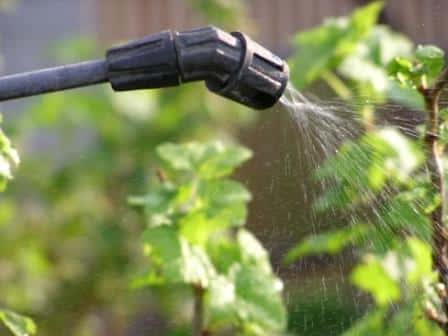
Top dressing
The plant is fed three times per season. In the spring, during the period of bud swelling, nitrogen fertilizers are needed, you can use a 5% solution of bird droppings. The second feeding is done before flowering: use Kemira, Plantofol or another ready-made complex for grapes, in accordance with the manufacturer's instructions. The third top dressing for this variety is made in September, after the harvest. Fertilized with organic matter.
Pruning and clothespin
Pinot Grigio needs regular pruning. Cut the bush in the spring, after removing the covering material. Remove dry branches, cut off excess shoots with scissors. The vine is tied to pre-prepared wooden pegs. The clothespin is carried out in the spring, breaking off strong branches, slightly above 10 knots.
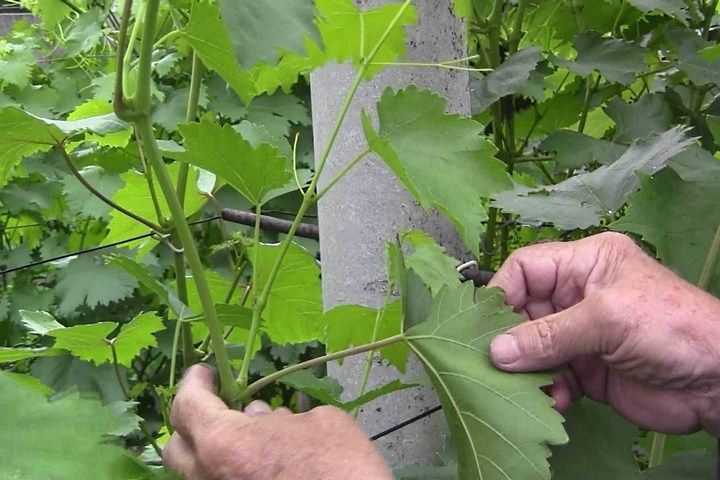
Seasonal disease prevention
Since the variety is susceptible to mildew and mildew diseases, the plants should be regularly sprayed. This is done with a Bordeaux mixture or fungicides (Horus, Topaz, Strobi). After the formation of the ovary, during the period of berry filling, spraying is not carried out.
Autumn processing is carried out before the grapes are sheltered for the winter to prevent the preservation of spores and the development of diseases in the next season.
Bunch care
They are protected from birds by pulling on a metal mesh. To protect against wasps, poisoned bait is hung in the vineyard, wasp nests are found and burned. If the bunches are affected by diseases, they are destroyed in a timely manner in order to prevent the spread of the disease.
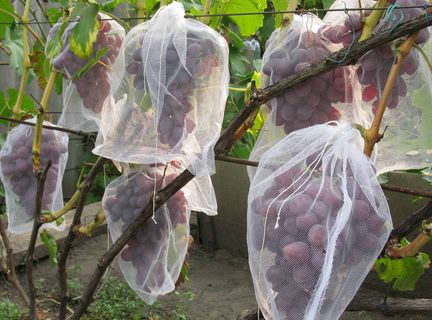
Preparing creepers for winter
Pinot Grigio needs shelter. It is good if a special trench is dug along the rows of grapes to hide the vine. Then it is simply laid for the winter and covered with earth, film, spruce branches or other covering material. Before the shelter, wilted leaves and dry branches are removed, the vine is treated from diseases and pests.
Fruit ripening period
The full development period takes 130-150 days. Ripe bunches are harvested in mid-September. They are carefully cut with scissors and placed in spacious containers.

How to store
Technical (wine) grape varieties are immediately processed. In France, the sale of young wines officially begins at midnight on November 15, during which time it must ferment, this requires at least a month.
Where are grapes used?
Still white and rosé wines, sparkling wine and wine material for champagne are prepared from Pinot Grigio grapes.
Growing problems and how to solve them
The main problem is the damage to grapes by diseases and pests.

Fungal
These include:
- oidium;
- mildew;
- gray and white rot;
- black spot.
To prevent the grapes from getting sick, you should follow the vine planting scheme, cut the vine and remove the foliage and branches under the bushes. For prophylactic purposes, plants are treated with Bordeaux liquid, iron or copper sulfate, preparations with sulfur. Fungicides of complex action (Topaz, Horus) help well.
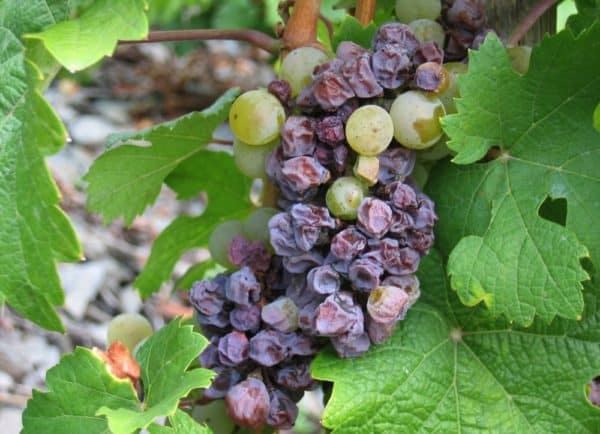
Bacterial
Such diseases occur when damaged by pests, after harsh winters, chronic diseases of the seedling. For prevention you need:
- do not overload the vine;
- protect the vineyard from birds and wasps;
- carefully cover the plant so as not to damage the bush;
- treat the plant from fungus;
- avoid excessive watering;
- fertilize the grapes correctly.
When a bush is infected with bacteria, you usually have to uproot it.
Pests
The vineyard can be affected by: phylloxera, ticks or leaf rollers. If pests are detected, they are treated with insecticides (for example, Kenmix), in strict accordance with the manufacturer's recommendations. Of course, growing grapes is hard and painstaking work. However, the winegrower, seeing how his own beautiful and aromatic wine splashes in the glass, forgets about the problems and happily prepares for the new season.
